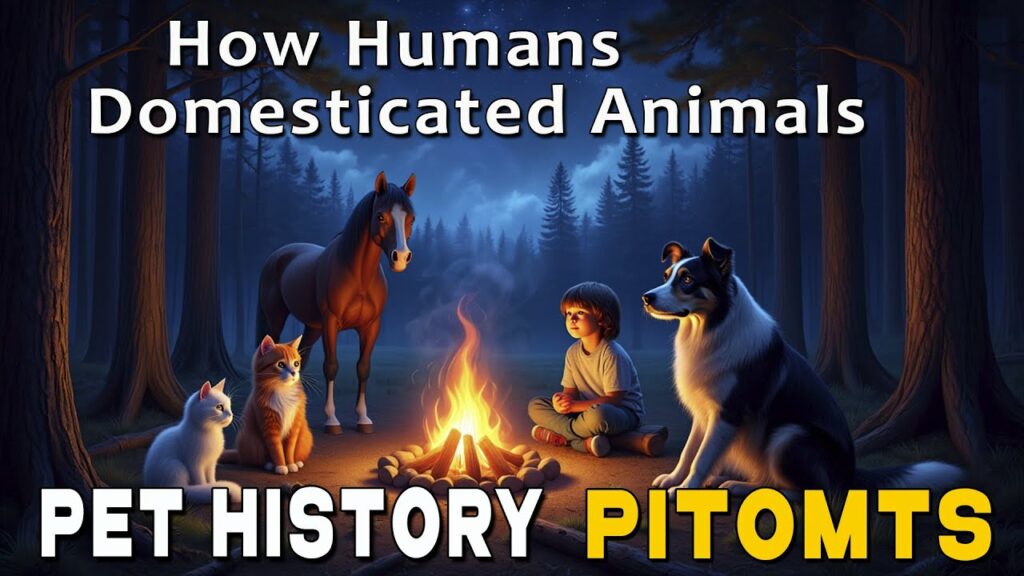The relationship between humans and domesticated animals is a profound and complex one, forged over millennia and fundamentally shaping the course of human civilization.1 This connection is not a simple matter of human control, but a co-evolutionary process that has brought about significant changes in both humans and animals.
The Origins of Domestication
Domestication is an evolutionary process in which humans, through artificial selection and control over breeding, cause genetic and behavioral changes in a species to make it more beneficial and compatible with human life.2 It is distinct from taming, which is simply conditioning a wild animal to be less fearful of humans.
- Early Domestication: The earliest and perhaps most unique case of domestication is the dog, which diverged from wolves as early as 33,000 years ago.4 Unlike other domesticated animals, this relationship began when humans were still nomadic hunter-gatherers. Wolves that were less afraid of humans likely scavenged their camps, and over time, a symbiotic relationship developed, with dogs serving as guards and hunting partners.
- The Agricultural Revolution: The large-scale domestication of other animals, such as sheep, goats, pigs, and cattle, began during the Neolithic Revolution (around 12,000 to 8,000 BCE).6 This shift from a hunter-gatherer lifestyle to settled agriculture was directly enabled by the ability to domesticate plants and animals.7 Having a stable food supply from livestock and crops allowed human populations to grow and led to the development of urban centers and complex societies.
How Domestication Changed Human Societies
The domestication of animals had a transformative impact on human life, providing a foundation for economic, social, and cultural development.
- Economic Impact:
- Food and Resources: Domesticated animals became a reliable source of meat, milk, eggs, and other resources like wool, hides, and horns. This created a more stable and predictable food supply than hunting alone.
- Labor and Transportation: Animals like oxen, horses, donkeys, and camels provided a powerful labor force, revolutionizing agriculture and transportation.They were used to pull plows, carry heavy loads, and as mounts for travel and warfare, fundamentally changing the scale of human enterprise.
- The Rise of Nomadic Cultures: The accumulation of large numbers of domestic animals gave rise to shepherding and nomadic animal breeding cultures, which had their own unique social and economic structures.
- Social and Cultural Impact:
- Settled Life: The ability to keep and sustain animals and crops was a key driver for humans to transition from nomadic to settled lives, leading to the formation of villages, towns, and cities.
- New Relationships: The human-animal relationship evolved from a purely utilitarian one to include a more social and emotional dimension. Animals became companions, family members, and symbols of social status or religious significance.The ancient Egyptians, for example, considered cats to be sacred animals.
- Shared Evolution: The relationship is not one-sided. Domesticated animals have become genetically dependent on humans for their survival and reproduction. Furthermore, the relationship has influenced human evolution, such as the development of lactose tolerance in certain populations that relied on milk from domesticated animals.
Modern-Day Relationship
Today, the relationship between humans and domesticated animals continues to evolve. While many animals still serve practical purposes on farms and in labor, the role of companion animals, or pets, has become increasingly prominent, particularly in urbanized societies. Pets often serve as substitutes for family, providing companionship, emotional support, and a connection to nature. This modern dynamic reflects a mutual reshaping of behavior and social roles, where the lives and identities of both humans and animals are intricately linked.
